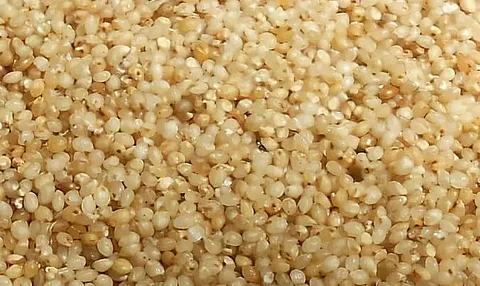
- Home
- Live Blog
- Breaking News
- Top Headlines
- Cities
- NE News
- Sentinel Media
- Sports
- Education
- Jobs

The growing popularity of millet among health-conscious millennials has pushed the demand for Nutri-cereals across India. The United Nations declaring 2023 as the International Year of Millet brings a great opportunity for Assam to popularize the Assam Millet Mission for boosting its production. India as the largest producer of millets pushed the UN General Assembly resolution to raise awareness and policy action for the nutritional and health benefits of millets consumption and their suitability for sustainable cultivation under adverse climatic conditions. This puts millet production in the state in the global context and brings an added advantage for popularizing millet production and consumption. Assam government's decision to set up the Assam Millet Mission for seven years starting from the current financial year has led to the establishment of millet demonstration farms in 15 districts. According to the Food and Agricultural Organisation (FAO) of the United Nations, millets are among the first plants to be domesticated and are considered Nutri-cereals due to their high nutritional content. While millets are easy to grow, favourable climatic conditions and the traditional expertise of farmers make it an ideal place to promote pre-historic crops. Evaluation carried out by the Regional Agricultural Research Station at Gossaigaon of small millet breeding materials provided to farmers under the All India Coordinated Research Project on small millets of the Indian Council of Agricultural Research and Indian Institute of Millet Research, found that there was an increase in grain yield with 33.87 per cent following the demonstration with improved practices in finger millet. The Gossaigaon station, one of the six RARS of Assam Agricultural University, has been popularizing millets cultivation among the farming community of the Lower Brahmaputra Valley Zone through demonstration of local varieties of finger millet, locally known as Maruadhan and foxtail millet, locally known as Konidhan, according to NEH Annual Progress Report: AICRP Small Millets Kharif 2020-21. "The Lower Brahmaputra Valley Zone of Assam has been facing the ramification of chronic problems of low crop productivity, food and nutritional insecurity, population explosion, poverty and resource shrinkage and degradation. Being the largest zone of the state, it enshrines a wide array of agro-ecological situations, socio-economic conditions, ethnicity, flood and drought proneness, soil conditions and microclimate variations," states the report which also explains the importance of the 15 millet demonstration farms set up under the millet mission in the state in promoting millets for food security. Traditionally, finger millets are grown in the Kharif season and the foxtail millet in the Rabi season. For the first two years, the mission activities will be fully funded under the World Bank-financed Assam Agribusiness and Rural Transformation Project (APART) and in the third year, the activities will be partly funded by APART and partly by the State government and Central government schemes while from the fourth year onwards, the funds will be sourced from State and Central government schemes. The farmers undertaking millet cultivation under the mission of attaining self-sufficiency through smooth market linkage and assured remunerative price within the project period will be crucial for the sustainability of millet cultivation in the state. The Assam Cabinet deciding to introduce millets under the Mid Day Meal scheme (now renamed as PM-POSHAN) under the Sarba Siksha Abhiyan Mission for and supplying millet-based products to districts with Integrated Child Development Centres improving nutritional standards of children will generate demand for locally produced millets and assured markets of government procurement. The Central Government has revised the guidelines for the movement of the surplus production of millets to other States and the provision of inter-state transportation of surplus millets through the Food Corporation of India (FCI) is incorporated to cater for advance demand placed by consuming states before the start of procurement. Lessons must be learnt from poor procurement of rice in the state by FCI and the State government pushing for policies that ensure that millet growers in the state are not adversely affected by any procurement and distribution of surplus millet production of other states under any flagship programme of the Central government for PM-POSHAN. Such policies must ensure that millet grown by Assam farmers is first procured for any state or central schemes involving millet supplies for a nutritional supplement of children or other age groups and if there is any shortfall it is met by supplies from a central pool of FCI procurement from other states. State Government procuring millets at a Minimum Support Price will be crucial to motivate the farmers by assuring them of livelihood protection after shifting from paddy to millet. The production of millets in India has increased from 17.26 million tonnes during 2019-20 to 18.02 million tonnes in 2020-21 while it has gone up from 1.31 lakh tonnes to 1.51 lakh tonnes in Assam which indicates a gradual rise in popularity among farmers. The Assam Millet Mission has brought new hopes for remunerative and sustainable millet farming.